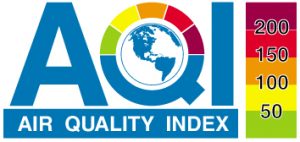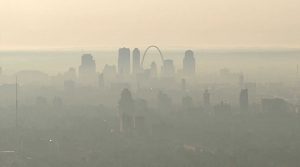Air quality forecasting concluded at the end of last month, and the Clean Air Partnership is pleased to report that, as we reflect on this season, ozone air pollution levels remained consistent with those of the prior year. The 2022 forecasting season began with encouraging news that the St. Louis region had once again escaped being ranked among the top 25 most-polluted cities, though we still struggle with unfavorable air quality, as St. Louis ranked 37 in the nation overall for most ozone-polluted U.S. cities and recently failed to meet the U.S. Environmental Protection Agency’s (EPA) latest ozone standards.
However, a look back over the past several months reveals that our air quality remained relatively healthy during the peak ozone season. From the beginning of May through Sept. 30, green was the dominant color with 80 days where the air quality was good, followed by 69 yellow or moderate air quality days, and four unhealthy orange days for sensitive populations, including children, older adults, people who work or exercise outdoors, and those with existing lung disease or cardiovascular disease. The data also revealed no poor or red air quality days occurred.
This year, the Clean Air Partnership worked collaboratively with Citizens for Modern Transit (CMT) and other partnering organizations to inform people the way they choose to travel impacts the quality of air area residents breathe, while motivating them to modify commuting behaviors as often as they are able during the summerlong “Don’t Pollute. Switch Up Your Commute,” campaign. Hundreds of St. Louisans signed up to receive daily air quality forecasts to stay informed about ozone pollution levels in the region and how those levels can affect their health, and even though the forecasting season has come to an end, area residents can still visit SwitchUpYourCommute.com to access a wealth of information on the wide array of alternative transportation options available on both sides of the Mississippi River, associated schedules, pricing, programs, ride matching services and incentives.
Additionally, there are many other eco-friendly lifestyle changes unrelated to commuting that individuals, businesses and municipalities can consider any time of year to positively impact air quality and improve lung health in their communities. These changes include efforts to conserve energy, recycle, reduce waste and reuse items, all of which can be found and more at CleanAir-StLouis.com.
Air quality forecasting will resume in May 2023. In the meantime, individuals can get a head start by signing up here to receive the daily forecast in their email inboxes or via text message from the EPA’s AirNow EnviroFlash air quality alert system. We thank you for your continued efforts to help keep our air quality in healthy ranges and look forward to re-engaging with you next year!



